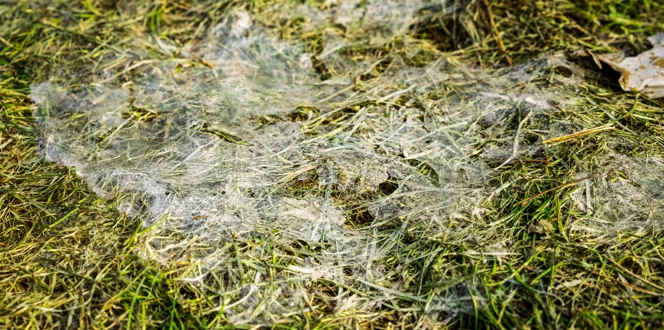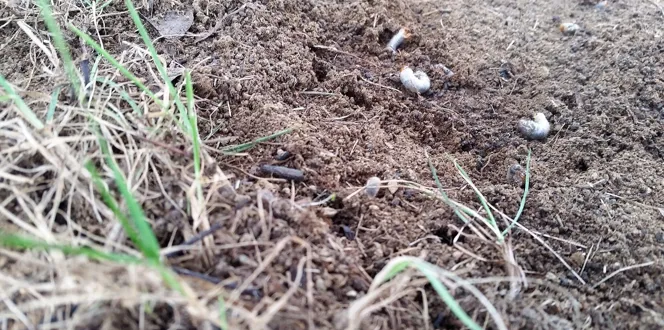Imagine that ugly, itchy sweater your great aunt knitted for you as a gift on your fifth birthday. Similar to your feelings against the sweater--distaste, dissatisfaction, shame--red thread is one of Mother Nature's more unwelcome creations that can weave itself into your lawn.
However, despite the fact your turf may frequently put up with red thread damage year after year, its long-term effects are not so harmful. (You eventually grew out of that sweater, didn't you?)
This Summer
The signature red strands of the disease are showing up in lawns across the Midwest and East U.S. this year. The fungus, which appears as thin, red or pink-colored threads that emerge from individual grass blades, is visible to the naked eye when active.
Although red thread can kill grass blades and cause them to turn brown, the fungus does not necessarily kill plants completely. It's a common disease and very noticeable-you can even see it from the road if you casually drive by.
The red thread fungus is an example of a parasite, which must rely on other living or dead matter for food because it cannot manufacture its own. In the case of red thread, the fungus attacks and feeds off of grass blades.
Typically active in the spring and early fall, red thread ultimately defaces lawns by scarring them with 2-inch diameter brown spots and small brown patches. This year, however, was unusual because cooler weather crept into the early summer season, which in turn prolonged red thread activity. Red thread thrives in cooler weather, when there is a lot of moisture beneath the turf.
Now that temperatures are rising, lawns--specifically those with cool season grasses--will begin to dry out and cease growth. Some regions will reach a point in August when red thread is no longer active. However, red thread damage is still apparent after its activity subsides during warmer weather. Some brown areas you see might be a result of red thread activity earlier in the year. Large infestations can brown an entire lawn.
Cool-season grasses such as fine fescue and perennial ryegrass are most susceptible to red thread damage. The fungus may attack lawns in any particular year, but the likeliness depends on precipitation during spring; a wetter season will likely result in more severe red thread damage as opposed to a dry spring season.
In spring, red thread can be prevented from causing further damage later in the year. For example, apply fertilizer or fungicide when the fungus is active to prevent it from wreaking havoc on lawns. One of the best things you can do to prevent the problem is fertilize. Fertilizer may help boost healthy growth in affected turf.
Severe damage may be addressed with a fungicide after red thread appears, but reversing the problem may take at least two weeks after application.
Because you want to enjoy your plush, green lawn this summer, monitor the turf for red thread damage as the season progresses. After all, an ugly, brown and rough terrain can't compare to the luscious, green and soft grass blades on which you could be planting your bare feet after a long, busy day of summertime fun.





